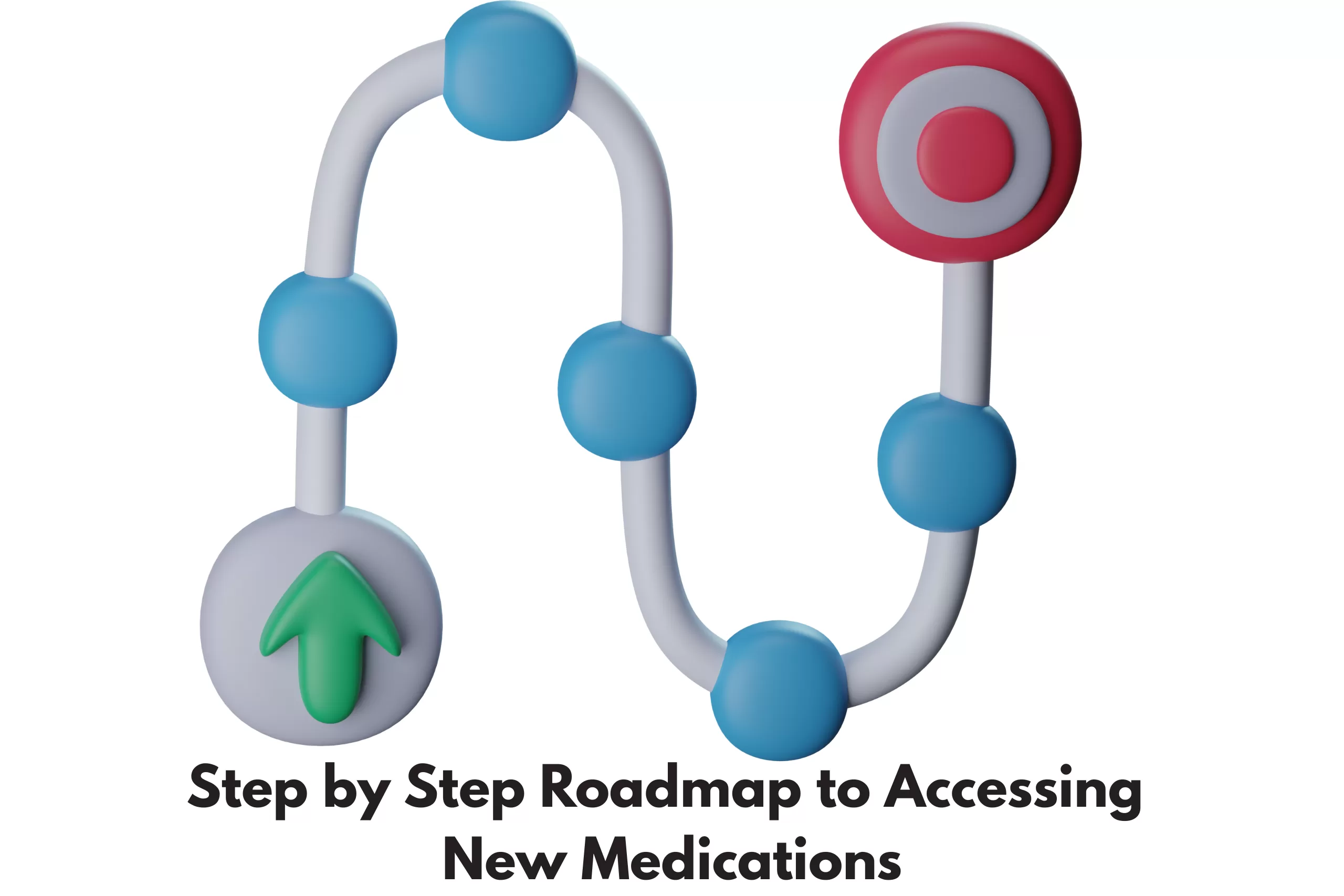Getting healthcare covered—especially for new medications or procedures—can feel overwhelming. But remember it’s a process, and a “no” from your insurance company is not always final. Also remember if you get a letter in the mail that says it is denied and may not be on formulary, read the whole letter. It is often about proving your rare disease and not an issue of it being unavailable. That little nugget of priceless information is often buried in the letter!
This guide breaks down each stage of that process and gives you tools, tips, and sample letters to help you move forward confidently. A printable checklist is at the end of this page.
Also, we know this is A LOT of spoons to use. So pace yourself. But remember, do not give up. This is your healthcare. We, like you, are living with the complexity of rare disease. We see you. We hear you. Because we ARE you.
STEP 1: START THE ACCESS PROCESS
Goal: Get your treatment or medication request submitted to insurance.
- Complete a Start Form
- Most drug companies have a start form (often found on their website).
- You or your doctor can fill it out to begin the process.
- Check for Prior Authorization (PA)
- Many insurers require PA before approving new medications.
- This means your doctor may need to send:
- Test results (like genetic or lab reports)
- Medical records
- Prescription details
- Ask for a Letter of Medical Necessity (LMN)
- Your doctor can write this letter explaining:
- Your diagnosis
- Why you need this specific treatment
- What other treatments have failed or aren’t appropriate
- (See sample LMN below)
- Your doctor can write this letter explaining:
STEP 2: IF YOU ARE DENIED COVERAGE
Goal: Begin the appeals process — this is common and often successful!
- Read the Denial Letter Carefully
- It should explain why you were denied and outline how to appeal.
- Ask for a “Peer-to-Peer” Review
- Your doctor can request a one-on-one discussion with the insurance company’s medical reviewer to explain why the treatment is necessary.
- Connect with the Drug Company’s Case Manager
- Most companies have dedicated staff who guide you through appeals and can provide sample documents or additional support.
- Write Your Own Appeal Letter
- Include your story, diagnosis, and why this treatment matters to your health and quality of life.
- (See sample appeal letter below)
STEP 3: STRENGTHEN YOUR CASE
Goal: Stay organized and use all available advocacy resources.
- Track Everything
Keep copies of every email, letter, and phone call. Write down names, dates, and what was discussed. - Stay in Touch with Your Clinician
Make sure your doctor is actively involved in every step—especially for the peer-to-peer and letters of support. - Contact Consumer Assistance
If you need extra help, reach out to your state’s Consumer Assistance Program (CAP) or Department of Insurance: localhelp.healthcare.gov - Know Your Policy
Review your health plan documents and call your insurer (or your HR department if it’s employer-based) for clarification.
STEP 4: DON’T GIVE UP!
Goal: Keep pursuing coverage until all levels of appeal are completed.
- You have the right to appeal any denial.
- The insurer must provide clear instructions for each appeal step.
- If your doctor believes delay could harm your health, you can request an urgent or expedited appeal.
REMEMBER:
✅ “No” doesn’t mean “never.”
✅ Persistence, documentation, and communication are key.
✅ You are not alone — your doctor, the drug company, and advocacy organizations are part of your team.



